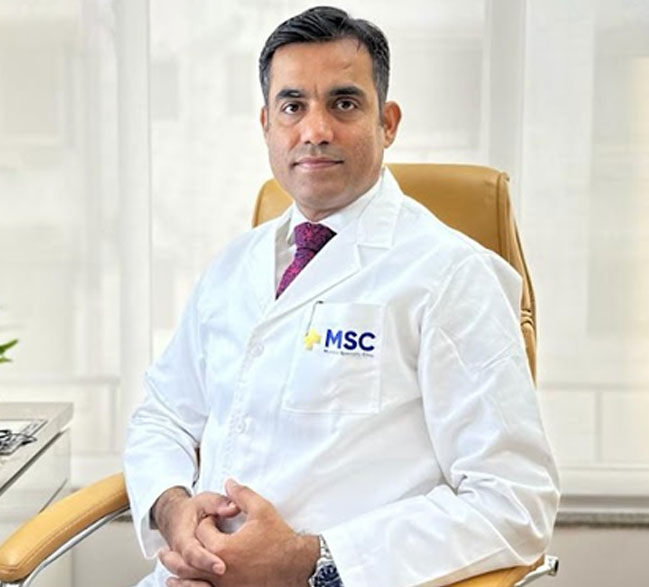Scoliosis: What You Should Know and How It Can Be Treated

1. What is Scoliosis?
Scoliosis is a medical condition characterized by an abnormal sideways curvature of the spine. The spine typically curves into an "S" or "C" shape instead of following a straight line. This curvature can range from mild to severe and may be seen at any age, but it is most commonly diagnosed during childhood or adolescence when the body is growing rapidly.
The causes of scoliosis are varied, with some cases being congenital (present at birth), while others may develop as a result of a genetic condition or neuromuscular issues. In most cases, the exact cause of scoliosis is unknown, which is referred to as idiopathic scoliosis.
2. Symptoms and Effects of Scoliosis
While mild scoliosis may not cause any symptoms, more pronounced curves can lead to visible signs such as uneven shoulders, an uneven waistline, or one hip being higher than the other. As the curvature worsens, individuals may experience discomfort or pain, particularly in the back. In severe cases, the curvature can affect the ability to breathe or perform daily movements, leading to significant impairment in quality of life.
3. Diagnosis of Scoliosis
Early detection of scoliosis is crucial for managing the condition effectively. Regular physical examinations, particularly during periods of rapid growth in children and teenagers, can help in identifying the early signs of scoliosis. If scoliosis is suspected, doctors may recommend imaging tests, such as X-rays, to assess the degree of curvature and monitor its progression. These imaging tests provide valuable insights into whether the curve is stable or worsening over time.
In some cases, more advanced imaging techniques such as MRI may be recommended if there are concerns about underlying conditions contributing to scoliosis, such as a neurological disorder.
4. Treatment Options for Scoliosis
The treatment approach for scoliosis depends largely on the severity of the condition and the age of the patient. The primary goal of treatment is to prevent further progression of the curve and to manage any discomfort or symptoms.
- Observation: For mild scoliosis curves, observation may be recommended. Regular check-ups and imaging tests help monitor the condition and ensure the curve does not worsen.
- Physiotherapy and Bracing: For moderate scoliosis, physical therapy can help improve posture and flexibility, while bracing may be used to prevent the curve from worsening, especially in growing children and teenagers. Braces are custom-fitted and worn during the day to limit further spinal deformities.
- Surgical Intervention: In cases where the curvature is severe or worsening, surgery may be recommended. The goal of scoliosis surgery is to correct the spine’s curvature and prevent future health problems. Modern minimally invasive techniques allow for smaller incisions, reduced blood loss, and faster recovery times compared to traditional open surgery. These procedures are particularly beneficial for patients looking to avoid the long recovery times associated with traditional spinal surgery.
- Robotic-Assisted Surgery: Advances in surgical techniques, including robotic-assisted navigation, offer even greater precision in scoliosis surgery. Robotic systems enable surgeons to create personalized treatment plans using 3D imaging and tailor the surgery to the patient's specific spinal structure, ensuring improved accuracy and better outcomes.
5. Benefits of Minimally Invasive Surgery
Minimally invasive scoliosis surgery has revolutionized the treatment landscape, offering patients a quicker recovery with less pain. Unlike traditional methods, minimally invasive surgeries use small incisions, which reduce the risk of infection and minimize scarring. The benefits of robotic-assisted navigation further enhance the precision of these surgeries, reducing the risk of complications and improving the overall safety of the procedure.
Why Choose Dr. Vishal Kundnani for Your Scoliosis Treatment?
Dr. Vishal Kundnani, Director and Head of Spine Services at Lilavati and Bombay Hospitals, is one of India's leading scoliosis specialists. With over 15 years of experience in treating complex spinal deformities, Dr. Kundnani is renowned for his expertise in both traditional and minimally invasive scoliosis surgeries. He offers personalized treatment plans, ensuring each patient receives the best possible care tailored to their unique needs.
Dr. Kundnani’s approach combines advanced technology, personalized care, and an in-depth understanding of scoliosis, making him one of the best scoliosis surgeons in Mumbai and India.
6. Treatment Centers
Patients from cities across India, including Mumbai, Delhi, Pune, Nashik, Thane, Navi Mumbai, Raipur, Indore, Bhopal, and Jaipur, can access top-quality scoliosis care at renowned hospitals like Lilavati Hospital, Bombay Hospital, Breach Candy Hospital, and Saifee Hospital.
Book Your Consultation Today
If you or a loved one is struggling with scoliosis, don’t wait to seek professional help. Early treatment can make a significant difference in the progression of the disease and can improve overall quality of life.
📞 Call: 9619100123, 9619200123, 9619300123 to consult Dr. Vishal Kundnani, the best scoliosis surgeon in Mumbai & India.




